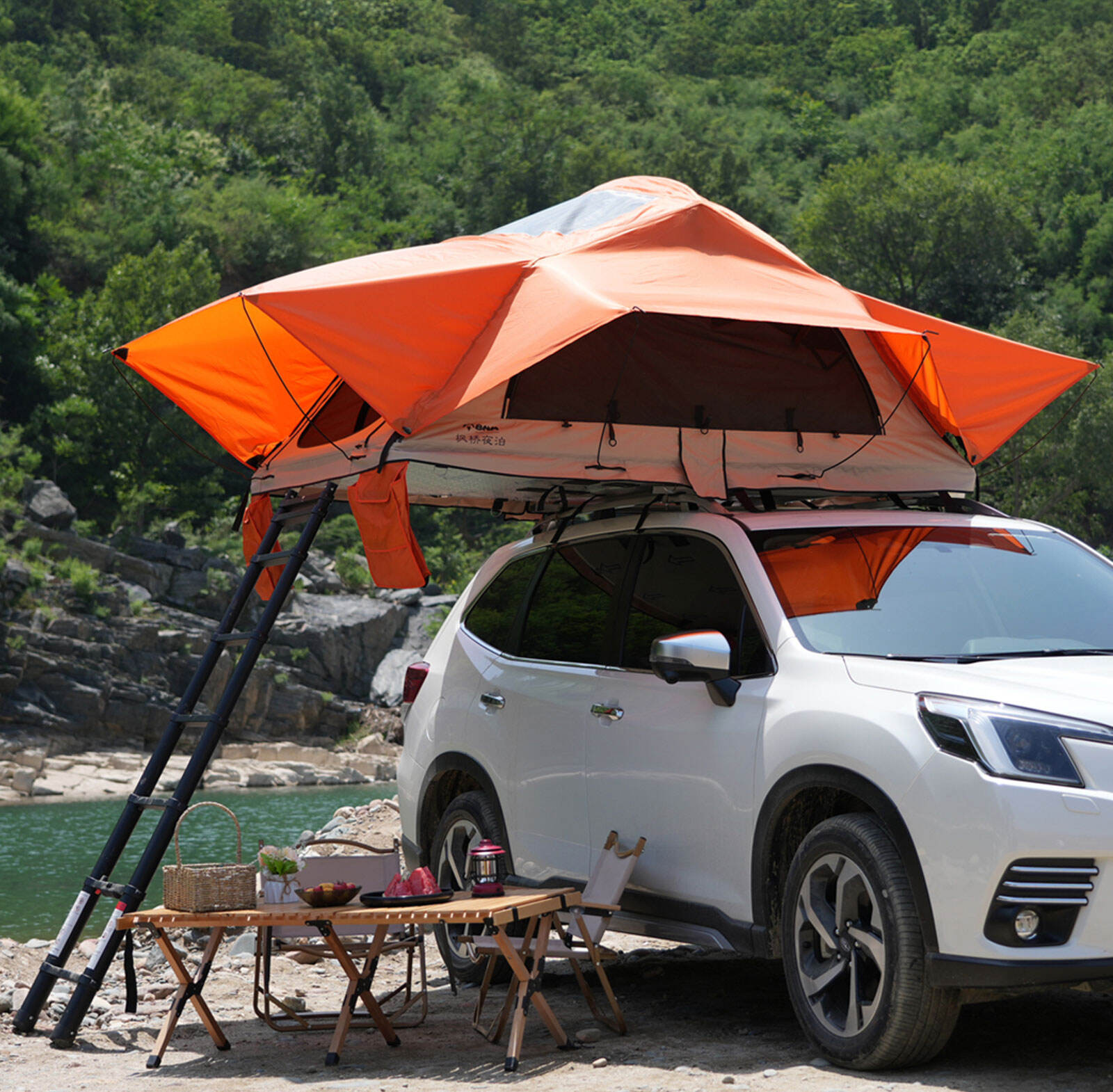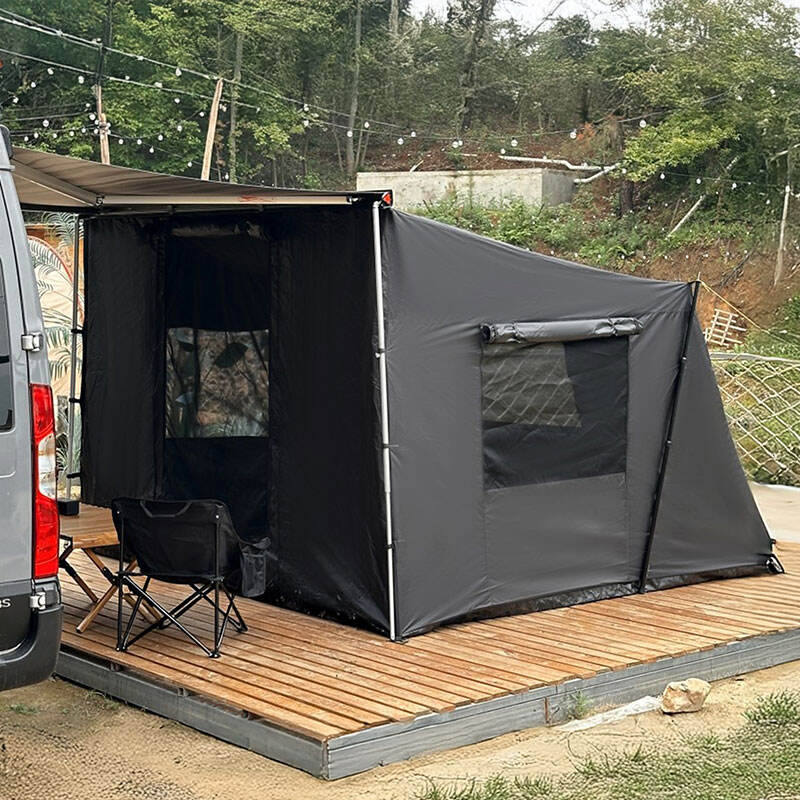as far as out of doors adventures go, one of the most essential tools is a tent, which provides refuge, comfort, and security in the wilderness. in the past 10 years, inflatable tents have become a well known substitute to standard standard pole tent, and this has sparked the debate among campers and glamping lovers as well.
Which tent is the best one then in this aspect-by-way-of aspect comparison we will find the difference between an inflatable tent and a pole tent, we will examine set up, durability, portability, price and the normal consumer experience, with the help of the quit, you will understand which one suits your outdoor lifestyle.
What is the reason to look at Inflatable and conventional Tents?
all tents are made with the same purpose: to provide shelter. however, the philosophy of layout and the choice of construction materials vary radically.
Pole tents have steel, fiber-glass or carbon-fiber poles to help the fabric shape.
Tents Inflatable tents depend on air-crammed beams (air columns) made of either %. or TPU to form an inflexible body after being inflated.
This design variation mostly affects all aspects of the camping experience such as speed of set-up and long-term durability.
1. Setup and comfort
Inflatable Tent
Time to set up: five -10 mins pumping with hand or electric pump.
Ease of Use: There is no need to use heavy and complicated poles. An inflatable tent can be pitched by one man, or woman.
ideal Suits: families, operators of glamping, or amateurs who require hassle-loose set up.
conventional Pole Tent
Installation Time: 15- 30 minutes based on size and complexity.
Installation: involves fitting out poles with sleeves, tying the shape, and threading them through sleeves. may be a bit difficult to new comers.
perfect For: experienced campers who do not mind putting more effort in to save more money.
Winner: Inflatable tents -they conserve work and time, or in adverse weather when rapid set up is the ultimate test.
2. sturdiness and balance
Inflatable Tent
power: Air beams are elastic, and that is why they can absorb the shocks of strong winds and not break.
damage hazards: prone to punctures, though easily fixed using patch kits.
materials TPU or p.c beams with drop-stitch era, which makes them sturdier.
conventional Pole Tent
power: stable poles offer high shape.
risk of damage: Poles may break or bend under great stress, which is often harder to repair in the vicinity.
equipment: metal, aluminum or fiberglass poles.
Draw — Inflatable tents are more flexible in the wind than pole tent are, when loaded up (as in the case of snow).
3. Weight and Portability
Inflatable Tent
Weight: a bit heavier because of heavy-beam and air pumps.
Portability: Small when deflated and packed; no hard poles to carry.
conventional Pole Tent
Weight: may be lighter when using small models but heavier when using huge family tents that have metal poles.
Portability: bulky due to long poles, although there are carbon-fiber poles in some ultralight backpacking tents.
Victor: Family and institution journeys are dominated by inflatable tents, whereas the ultralight backpackers prefer pole tents.
four. comfort and space
Inflatable Tent
indoors design: Air beams consume less interior space than rigid poles, thus allowing more to be used.
height Shapes: will be taller, made to resemble glamping or circle of relatives camping consolation.
traditional Pole Tent
poles: Poles may congest space indoors.
Shapes: wide range of dome, A-body or tunnel design.
Winner: Inflatable tents- when comfort is an issue, or when a family wants to go glamping.
five. climate Resistance
Inflatable Tent
Wind: works well in a storm because beams curve and do not out break.
Rain: p.c/TPU waterproof layers ensure that interiors remain dry.
Snow: is no longer the most suitable kind of snow bearing, because beams can creep out under the pressure of the weight.
conventional Pole Tent
Wind: strong but poles have the power to shatter in strong gusts.
Rain: sure provided that it is pitched effectively.
Snow: is more advantageous than inflatable tents as help of rigid poles.
Winner: relative to environment -inflatable tents in wind and rain, pole tents in snow.
6. restore and protection
Inflatable Tent
maintenance: easy home-made patch kits in case of leakages and punctures. Valves can also get replaced.
maintenance: needs correct cleaning, drying and safe storage.
conventional Pole Tent
repair: damaged poles are difficult to repair unless spares are available.
fabric care just like inflatable tents.
Winner: Inflatable tents - not as hard to fix in the field.
7. fee issues
Inflatable Tent
Pricing: in general more expensive due to higher quality materials (TPU, percent) and period.
fee: more expensive at the beginning, but more carrier life with right care.
conventional Pole Tent
Prices: higher on entry-degree models, primarily.
fee: appropriate wish of income-conscious or infrequent campers.
Winner: Pole tents due to low prices whereas inflatable tents provide more long-time period fee.
eight. Environmental impact
Inflatable Tent
TPU air columns are greener and re-usable.
Reduction in steel parts reduces the waste generated in the long period.
conventional Pole Tent
Fiber glass poles cannot be recycled.
Aluminum poles can be recycled but are too electrically extensive to supply.
Winner: Inflatable tents with TPU to make environmentally conscious customers.
facet-by way of-facet desk assessment.
|
|
Inflatable Tent
|
traditional Pole Tent.
|
|
Set up Time
|
5-10 min (clean)
|
15-30 min (complex)
|
|
solid
|
bendy in the wind
|
strong in the snow
|
|
Weight
|
Smaller, a little heavier
|
Light to small tents
|
|
indoor space
|
increased usable space
|
Poles reduce space
|
|
climate
|
good-looking in wind/rain
|
dainty in snow
|
|
maintenance
|
easy patch kits
|
harder to repair poles
|
|
price
|
more upfront
|
low priced extras
|
|
Environmental friendliness
|
TPU = recyclable Fiber
|
glass = non-recyclable
|
Which Tent Is right for You?
choose an inflatable tent with:
You must have quick installation and hassle-free interaction.
interior area depends on comfort.
you suggest to camp, glamp, or play in the tent frequently.
choose a conventional pole tent when:
You’re on a decent budget.
You camp in snowy conditions.
You are a low-budget traveller in a backpack searching in ultralight gear.
The MBNM advantage: high quality Inflatable Tents.
At MBNM, we layout and manufacture top class inflatable tents with advanced drop-stitch materials, TPU/p.c air beams, and bolstered seams. Our tents are:
smooth to installation in mins.
long lasting in opposition to wind and rain.
Designed for both camping lovers and B2B glamping/occasion operators.
to be had in custom OEM/ODM solutions, with branding, length, and material alternatives tailored for your desires.
With 15+ years of manufacturing information, MBNM ensures that your inflatable tent is constructed to last and clean to preserve.
end
the talk among inflatable tents and traditional pole tents doesn’t have a one-size-suits-all answer. each have strengths and weaknesses depending to your outside needs.
Inflatable tents win on comfort, area, and repair capacity.
Pole tents continue to be robust in finances-friendliness and snowy situations.
by means of thinking about your tenting fashion, environment, and budget, you may pick the tent that’s really better for you. And in case you’re looking for a durable, customizable inflatable tent that balances consolation and overall performance, MBNM is here to help you make the right preference.







 Hot News
Hot News



